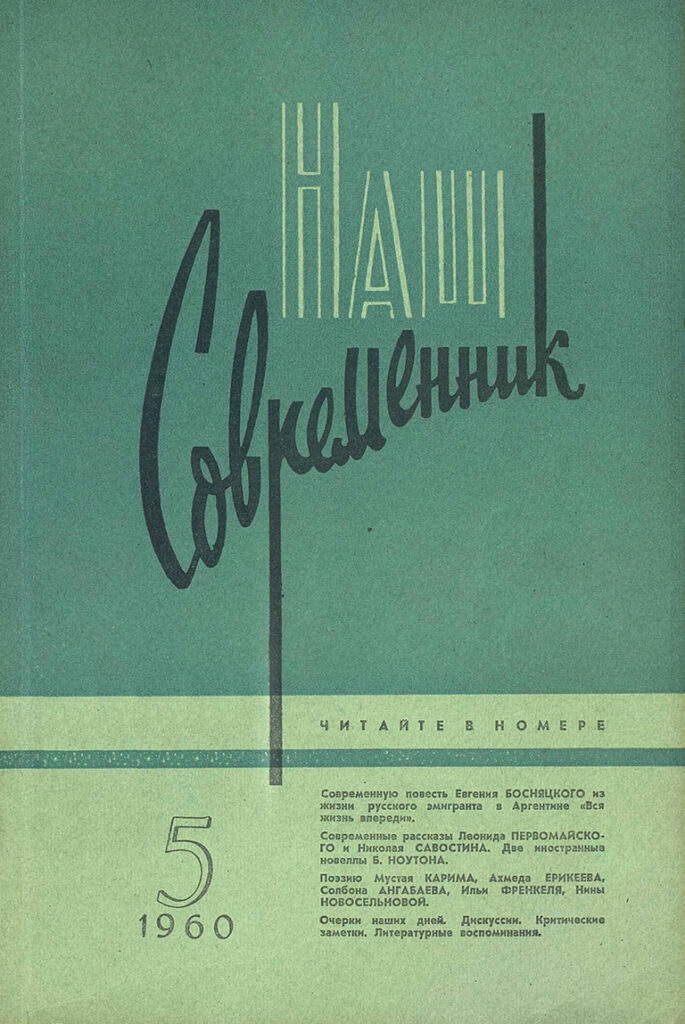Nash Sovremennik Digital Archive
Influential literary periodical of the Soviet and post-Soviet period
Nash Sovremennik (Наш современник, Our Contemporary) was established in 1956 in Moscow on the basis of the Maxim Gorky-founded literary journal Al’manakh (Альманах, Almanac; pub. 1933-1955, suspended 1940-1947). One of the esteemed Soviet/Russian “thick journals” (tolstye zhurnaly), Nash Sovremennik was published under the auspices of the RSFSR Union of Writers and was one of the most popular and well-respected Soviet literary periodicals. Unlike many of its contemporary counterparts that tended to attract writers and young talent from a more urban intellectual setting, Nash Sovremennik was a pioneer in finding talent from the Russian glubinka and remote provinces, providing these writers with an important literary platform unavailable elsewhere. As a result, the journal came to be associated with the so-called “village” or “provincial prose,” with some of its most important representatives being such writers as Fyodor Abramov, Viktor Astafyev, Vasily Belov, and Vasily Shukshin, among others.
Though largely faithful to Marxist-Leninist precepts since its founding, during the last years of the Soviet Union the journal underwent dramatic ideological reformulations, moving away from communist orthodoxy to Russian neo-Slavophile conservatism and patriotism that fiercely opposed Western political and literary trends on ideological grounds. At the height of its popularity in the 1990s Nash Sovremennik would boast a circulation of nearly half a million copies.
Led by Stanislav Kunyayev since 1989, the journal has become an important literary and journalistic vehicle for Russian conservatives and traditionalists, attracting such political and literary figures as Gennadi Zyuganov, Nikolay Ryzhkov, Sergey Kara-Murza, Aleksandr Prokhanov, Zakhar Prilepin, and the controversial late Metropolital Ioann (Snychev).
